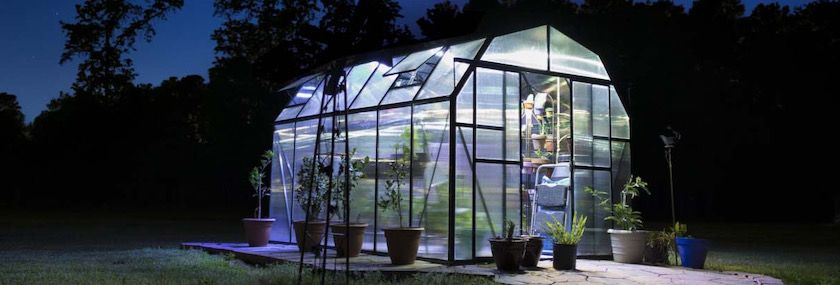Pro Tips for Fall Lawn Clean Up
Caring for Your Yard


Fall is just around the corner and for homeowners committed to caring for their yards, it’s a busy time of year.
While the grass may grow slower, the debris from plants and trees can be overwhelming. That’s why it’s important to use your tools, particularly your mower and blower, to your advantage to make the work easier.
With this in mind, Jeremy Knecht, landscape professional at J Jacobs Grounds, offers tips for keeping your lawn in tip-top shape this fall. He also shares a schedule he uses for fall lawn care and cleanup.
Keep Mulching
“Most of the yards we maintain are a ryegrass and bluegrass mix or a turf-type fall fescue,” Knecht said. “By September, the turf growth has slowed down but we will continue to mulch the lawns each week through October.”
Some homeowners, particularly those sensitive to environmental impact, will keep mulching leaves and yard debris until the end of the season.
“Mulching won’t give you the same finished appearance,” he said. “There will be more chips and debris loose in the grass but it’s a good option.”
Knecht recommends that homeowners mulch throughout the season and continue mowing weekly so the volume of fallen leaves doesn’t overwhelm the landscape.
“Since the grass is growing slower, weekly mowing is more about managing the fallen leaves so they don’t overwhelm the mower. There’s nothing wrong with chopped-up leaves in the lawn as long as it’s not a huge amount.”
One caveat to mulching is when a high volume of walnuts or acorns is on the lawn. It can be dangerous mowing through those from a projectile standpoint. They can also affect the pH of the soil, which can be detrimental to grass health.
Blow Before You Mow
In early November, lawn cleanup should be the focus. Use a blower to clear leaves and plant debris from landscape features and flower beds, paired with bagger-equipped mowers to remove the debris from the lawn.
“Once everything is blown out of the beds, we’ll use the UltraVac (bagging system) to vacuum everything up. It picks everything up, so it’s nice and clean right down to the bare grass.”
Even without a bagger-equipped mower, it can still be helpful to mow the lawn after blowing out landscaping and before raking up the debris. Mowing, especially mulching, chops the leaves and debris into smaller pieces that can be easier to vacuum up with a leaf vac or rake. Those smaller pieces also enable more debris to fit into each yard waste bag for disposal.
Compost Yard Waste
When it comes to disposing of yard waste, particularly for homeowners with larger properties, keeping some yard debris on site is a best practice.
“It’s a lot easier to keep the debris on site, so we’ll dump it in a back corner of the property to let it start composting,” Kecht added.
“I’ll just take our dump trailer full of debris at the end of a work day and dump it near our garden. It’s free, good fertilizer and ground cover for our garden. It’s a win-win situation and it’s free.”
Consistency Is Key
While the grass may not be growing, homeowners should continue mowing weekly through the fall. This is less about cutting the grass and more about managing the yard waste.
“After mulching yards through October, we typically break yard cleanups into three sessions: one in early November, one in late November and then a final cleaning in December,” he said.
“We’ll blow out the landscape beds each time, then run the bagger-equipped mower over the lawn. If any shrubs or perennials need trimming, we’ll do that too.”
Reduce Cut Height
One tip for easing fall yard cleanup is reducing mower cut height, particularly for the cold season grass varieties he typically maintains.
“Once we get into the fall season, we’ll typically set the mowers up at three inches, which is a fair amount lower than normal in the summertime,” he said. “In the summer, we’ll mow at between three and four inches, more if the lawn is thick.
The lower cut height helps create a stronger vacuum effect when bagging clippings. It also helps reduce the impact of snow piles on the lawn.
“If there’s a pile of snow and the grass is taller, it’ll get matted down and wet-stuck to the ground. Then you have more chance of snow mold growing on the grass.”
Fall Yard Care Timeline
Here is a typical routine from September through the end of the year. These items are in addition to weekly mowing/mulching of the lawn.
- Early September: Apply broadleaf protection to the lawn. This helps to kill off dandelions and other broadleaf weeds earlier than if protection is applied the following spring.
- Late September/Early October: Aerate, dethatch or overseed the lawn. Overseeding in the fall is preferable because it enables the grass seed to start growing earlier the next season.
- November: Install baggers on mowers. Blow leaf debris out of landscapes and planters before mowing.
- December: After the final mowing and cleanup, apply a winterizer fertilizer. This adds nitrogen to the soil so it’s ready for spring’s arrival.
“Winterizer fertilizer is a must-do for people who want their yard to be greener than their neighbors’ yards first thing in the spring,” Knecht said.
If you follow these tips, you can easily take your fall lawn care and cleanup routine up a notch, making it more manageable. Not only that, but come next spring, you’ll have a lawn that’s the envy of the neighborhood.
Tags:Seasonal Living

Acreage Life is part of the Catalyst Communications Network publication family.
















